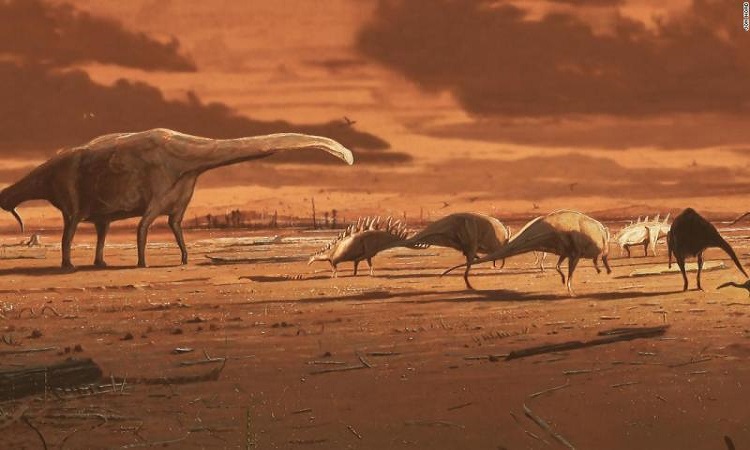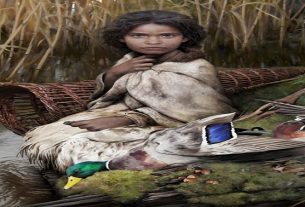A team of paleontologists announces the discovery of a hadrosaur or “duck-billed dinosaur” in Africa. This interesting premiere raises the even more fascinating idea that these dinosaurs crossed the sea to reach this continent.
The Hadrosauridae, more commonly known as “duck-billed dinosaurs”, is a very common extinct family of ornithopod dinosaurs. We know from fossil records that these creatures evolved in North America before eventually spreading to South America, Asia, and Europe via land bridges.
A team of paleontologists today announced the discovery of the remains (teeth and jaws) of one of these animals. 66 million years old, it represents a brand new species called Ajnabia Odysseus. His particularity? It was found in Africa. However, we know that at that time the African continent was isolated by sea routes.
“It’s like finding a kangaroo in Scotland”
The discovery of the new fossil in a mine a few hours from Casablanca was perhaps “the last thing in the world you could expect,” according to Dr. Nicholas Longrich of the Milner Center for Evolution at the University of Bath, who led the study. “It’s like finding a kangaroo in Scotland.”
“Once you have eliminated the impossible, all that remains, no matter how improbable, must be the truth,” the researcher continues, citing Sherlock Holmes. “It was impossible to walk to Africa at that time. These dinosaurs indeed evolved long after continental drift divided the continents, and we have no evidence of the existence of land bridges. ”
A crossing while swimming, or on rafts
Also, the big question is: how did this dinosaur, which was about three meters long, get there?
“Given the existence of large persistent sea lanes isolating Africa and Europe from other continents, and the absence of the extensive bidirectional exchanges characterizing land bridges, these models suggest dispersions across sea barriers, similar to those observed in Cenozoic mammals, reptiles and amphibians ”, we read in the study.
For the paleontologist, it is possible that this specimen, and probably others with it, reached African shores either by swimming in open water or by “hitchhiking” on debris rafts.
The first hypothesis holds water. As the researcher points out, endowed with large tails and powerful legs, these dinosaurs were indeed probably good swimmers. In addition, many bones belonging to them have also been isolated in river deposits. Nevertheless, he points out that these animals would have had to travel hundreds of kilometers before reaching the coast.
The second hypothesis is also interesting. Ocean crossings on debris rafts are rare occurrences, but they have already been documented. This is how green iguanas traveled between the Caribbean islands because of a hurricane. Ocean crossings also explain how lemurs and hippos arrived in Madagascar or how monkeys crossed the Atlantic Ocean from Africa to finally reach South America.




